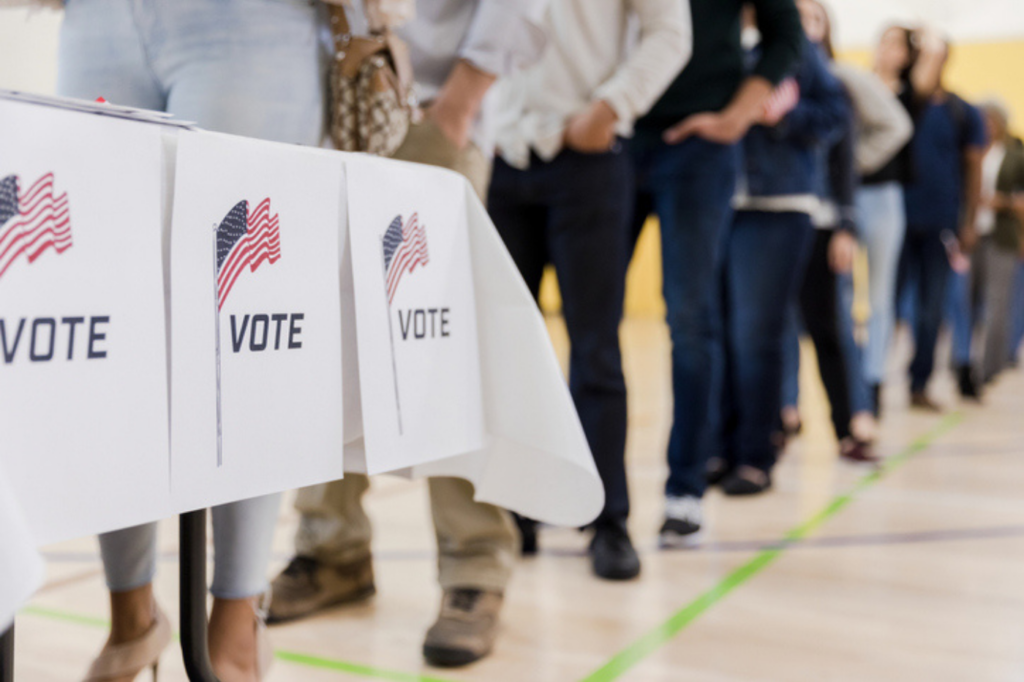FOR IMMEDIATE RELEASE
September 27, 2022
New Report Shows Persistent Registration Gap with Latinos
Lack of investment and systemic barriers keep many Latinos away from ballot box
A new report published today by the UCLA Latino Policy and Politics Institute (UCLA LPPI) found that nationally, Latinos had the lowest registration rate among racial and ethnic groups in the 2020 election. In California, Latinos had the lowest registration rate of all voters with only slightly more than 60 percent of eligible Latino voters registered statewide.
Despite Latinos’ share of the electorate rapidly growing over the past decade, a large registration gap between Latino voters and other racial groups remains. Latinos had the lowest registration rate among racial and ethnic groups in the 2020 election at 61.1 percent, more than 10 percentage points lower than the 72.7 percent registration rate for all voters regardless of race. Latinos were the only racial or ethnic group whose share of the electorate decreased at every step from eligibility to the ballot box. Latino voter representation dropped from 32 percent of eligible voters to 28 percent registered voters to 27 percent of those who voted.
“Latino voters cannot be taken for granted in elections,” said Sonja Diaz, founding director of UCLA LPPI. “With such a large registration gap, it’s clear that campaigns must make serious investments to mobilize this powerful voting bloc. This includes ensuring campaigns have a strategy for getting Latino voters registered and have policy proposals that motivate them to vote.”
Once registered, 88 percent of Latino voters cast a ballot, only 4 percent lower than the 92 percent of registered voters who cast a ballot regardless of race. In California, there is a similar trend with nearly 91 percent of registered Latino voters casting ballots in the 2020 election, just three percentage points lower than the overall rate.
Across California’s 10 counties with the largest Latino population, turnout rates for Latino voters varied considerably. Turnout rates were highest in Sacramento, Santa Clara, Orange, and Alameda counties – over 75 percent of registered Latinos voted. In comparison, only 60.2 percent of registered Latinos voted in Kern County. In San Diego County, there was a 9.5 percent difference between Latino turnout and overall turnout. The report recommends that counties should implement targeted mobilization strategies that close the racial and ethnic group turnout gaps, particularly for Latino and Black voters. A focus on overall turnout will likely lead to persistent racial and ethnic disparities in voter turnout.
“Persistent turnout gaps between Latinos, the nation’s fastest-growing demographic group, and the rest of the nation will lead to election results that increasingly do not represent the values and needs of a large number of voters,” said Rodrigo Dominguez-Villegas, one of the report’s authors and research director for UCLA LPPI. “Deeper engagement with Latino voters will allow California and other states around the nation the opportunity to grow this electorate and ensure their participation in our democracy.”
MEDIA CONTACT
Kacey Bonner
###
About UCLA Latino Policy and Politics Institute
The UCLA Latino Policy and Politics Institute addresses the most critical domestic policy challenges facing Latinos and other communities of color through research, advocacy, mobilization, and leadership development to expand genuine opportunity for all Americans.

